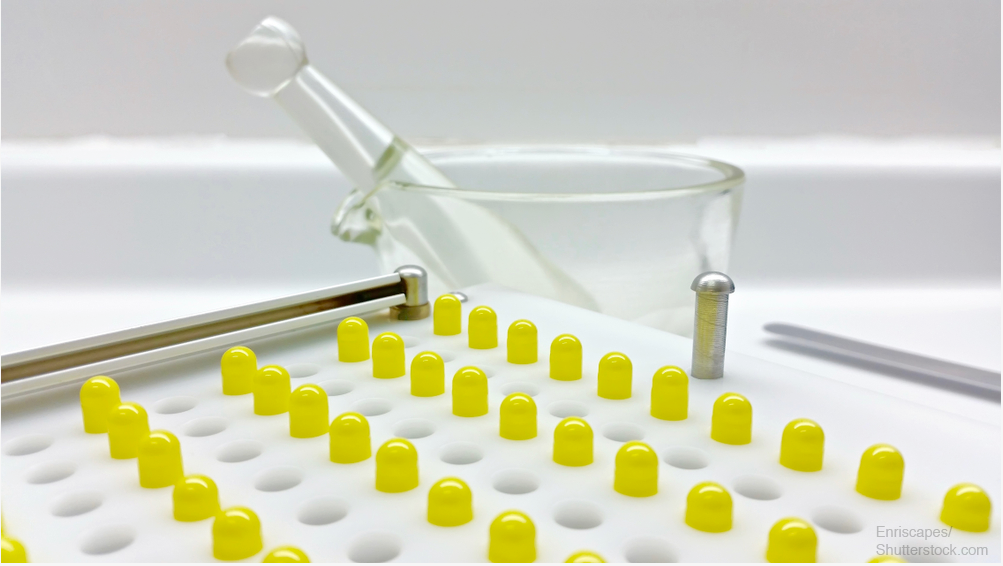Article
Antibiotics take aim at postop endophthalmitis
Author(s):
Research shows how drugs work and their selection to reduce infection risk

Models of intracameral antibiotic level abatement in the postoperative anterior chamber can be created to inform physicians on how these drugs work and how they can choose among them to reduce infection risk.
Reviewed by Steve A. Arshinoff, MD, FRCSC
Calculating and comparing abatement rates of three antibiotics commonly used intracamerally for prophylaxis in endophthalmitis may be a better model for assessing relative efficacy than earlier approaches, according to Steve A. Arshinoff, MD, FRCSC, associate professor, University of Toronto.
“Models of intracameral antibiotic level abatement in the postoperative anterior chamber can be created which inform us much more than the previous data on how these drugs work and how we can choose among them to reduce infection risk in our own operating environments,” Dr. Arshinoff said.
Using antibiotics
Intracameral use of antibiotics to prevent postoperative endophthalmitis is routine, and its use has been supported in 24 studies that included 7 million cases, while only 2 studies (comprising 90,000 surgeries), showed no benefit.
In the latter category, cases were performed using low concentrations of the antibiotics, which in Dr. Arshinoff’s opinion, is the cause of the lack of efficacy.
The question which still remains is which agent to use, a decision influenced by which strains of bacteria have recently been detected locally or globally, said Dr. Arshinoff.
He and colleague Milad Modabber, MD, MSc, published a study in 2016 looking at the abatement rate of injected intracameral moxifloxacin (Vigamox, Novartis)1 and have continued that work with additional data to compare moxifloxacin, cefuroxime (available prediluted as Aprokam Laboratories Thea, USA), and vancomycin.
“We wanted to create models of postoperative anterior chamber concentration decay of intracameral antibiotics in order to better understand their duration of antibacterial efficacy,” he said.
Dr. Arshinoff explained that a standard approach for studying antibiotic efficacy has been to measure initial anterior chamber concentration using the most resistant bacterial strains’ mean inhibitory concentrations (MICs) as target levels.
The problem with reported MIC90s is that the three antibiotics are not the same in mechanisms of action, and the calculations of efficacy may be distorted by simple comparison of calculated initial concentrations.
Defining the target
“All antibiotics appear to be sufficient for 14 hours, assuming we are targeting the regular bacteria. But we are not always targeting the regular bacteria,” Dr. Arshinoff said.
“Vancomycin and cefuroxime appear less effective because the concentrations achieved in the anterior chamber yield lower ratios to the target MICs.”
RELATED: Perspective: New data support first-line use of SLT for glaucomaUsing the rate of abatement is designed to be a more accurate method of comparison since the abatement calculations are shifted to compensate for the difference between time-dependent effective dose drop and dose-dependent antibiotic effect seen with different agents.
The graphs generated with this model identify which antibiotic is the most effective in the local environment or institution and how long it will be effective, if plotted against the target MIC levels of local bacterial strains.
Finding an option
The model showed that globally, moxifloxacin was more effective than the other two intracameral antibiotics, a finding supported in a 2017 study by Libre and Mathews concluding that only moxifloxacin was effective against all tested isolates from endophthalmitis cases at the Bascom Palmer Eye Institute.2
That study also found that elimination of Staphylococcus aureus and Pseudomonas aeruginosa requires maximum doses of antibiotics.
“We have to inject at least 0.5 mg or ≥500 μg (or 0.1 ml undiluted) moxifloxacin, and it does work better if you inject a higher volume of a lower dose because you are more certain of the amount that stays in the eye,” Dr. Arshinoff said.
Moxifloxacin 600 μg in 0.4 ml at the end of surgery is Dr. Arshinoff’s preferred prophylactic management approach for cataract surgery, used in about 90% of cases. He has used this technique since 2004 in more than 9,000 cases with no complications or toxicity from any single injection.
RELATED: Study: Statins associated with lower risk of development of POAG
Disclosures:
Steve A. Arshinoff, MD, FRCSC
P: 416/745-6969 E: ifix2is@gmail.com
This article is based on Dr. Arshinoff’s presentation at the 2018 annual meeting of the American Academy of Ophthalmology. Dr. Arshinoff does not have any disclosures relevant to this topic.
References:
1. Arshinoff SA, Modabber M. Dose and administration of intracameral moxifloxacin for prophylaxis of postoperative endophthalmitis. J Cataract Refract Surg. 2016;42:1730- 1741.
2. Libre PE, Mathews S. Endophthalmitis prophylaxis by intracameral antibiotics: in vitro model comparing vancomycin, cefuroxime, and moxifloxacin. J Cataract Refract Surg. 2017;43:833-838 Antibiotics take aim at postop endophthalmitis
Newsletter
Don’t miss out—get Ophthalmology Times updates on the latest clinical advancements and expert interviews, straight to your inbox.




